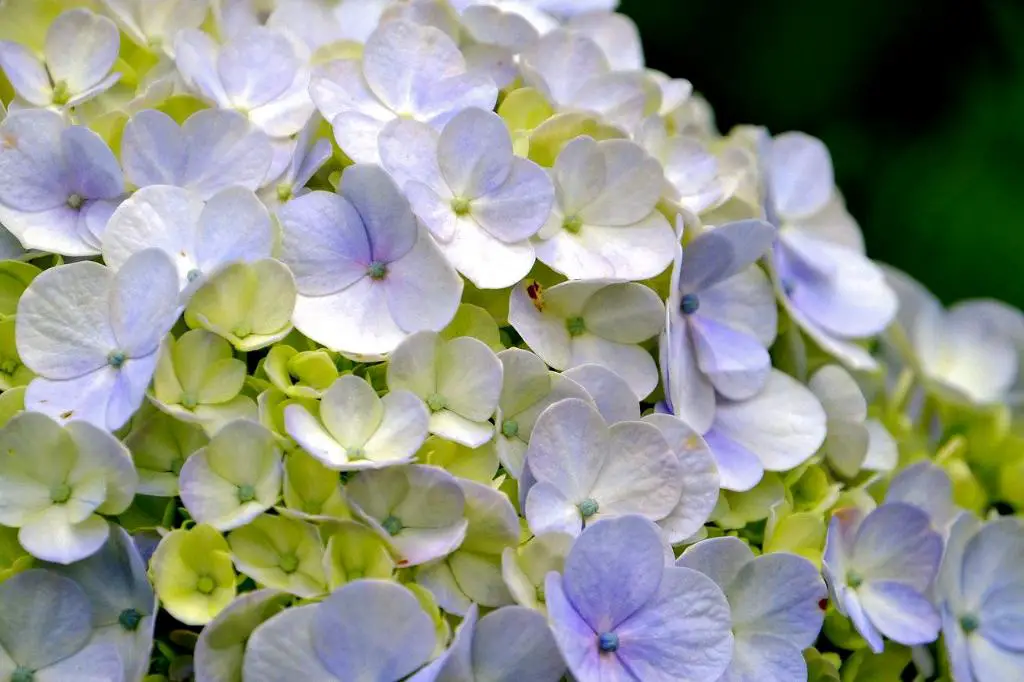When it comes to keeping your hydrangeas happy and healthy, ensuring they receive the right amount of water is key. Hydrangeas generally need about 1 inch of water per week to thrive. This equates to a deep watering session at least three times a week throughout the growing season. By watering deeply, you can encourage the roots to grow strong and deep, providing a solid foundation for your plant.
Watering Frequency for Different Hydrangea Varieties
While one inch per week is a good rule of thumb for most hydrangeas, it’s important to note that certain varieties may have specific water needs. Bigleaf and smooth hydrangeas, for example, tend to require a bit more moisture compared to other types. To meet the needs of these varieties, it’s best to maintain consistent moisture levels in the soil.
The Importance of Deep Watering
Deep watering is essential for hydrangeas as it helps ensure that the water reaches the roots where it’s needed most. Instead of light and frequent watering, which can promote shallow root growth, aim for deep watering sessions that encourage the roots to establish themselves deeply in the soil. This way, your hydrangeas will be better equipped to withstand periods of drought.
Using a Soaker Hose for Efficient Watering
A great tool for ensuring your hydrangeas receive the right amount of water is a soaker hose. This type of hose delivers water directly to the base of the plants, allowing for slow and deep watering. By using a soaker hose, you can help prevent moisture from accumulating on the leaves and flowers, reducing the risk of fungal diseases.
Factors Affecting Hydrangea Watering Needs
Several factors can influence how much water your hydrangeas require. These include the weather conditions, soil type, and the stage of growth the plant is in. During hot and dry periods, you may need to increase watering frequency to prevent the soil from drying out. On the other hand, excessive rainfall may require you to adjust your watering schedule accordingly.
Signs of Underwatering
It’s essential to pay attention to your hydrangeas and look out for signs of underwatering. Some common indicators include wilting leaves, drooping stems, and a general lack of vigor in the plant. If you notice these signs, it’s crucial to increase your watering frequency to ensure the plant remains healthy and vibrant.
Preventing Overwatering
While it’s important to provide adequate water to your hydrangeas, overwatering can be just as detrimental to their health. Signs of overwatering include yellowing leaves, root rot, and mold growth on the soil surface. To prevent overwatering, always check the soil moisture levels before watering and adjust your schedule as needed.
Mulching for Moisture Retention
Mulching around your hydrangeas can help retain soil moisture and reduce the frequency of watering. Organic mulches like bark chips or compost can regulate soil temperature, prevent moisture evaporation, and improve overall soil quality. Apply a 2- to 3-inch layer of mulch around the base of your hydrangeas, keeping it a few inches away from the stems to prevent rot.
Watering Hydrangeas in Containers
If you’re growing hydrangeas in containers, their water needs may differ from those planted in the ground. Container-grown hydrangeas tend to dry out more quickly and may require more frequent watering, especially during hot weather. Monitor the soil moisture closely and water when the top inch of soil feels dry to the touch.
Tips for Watering Hydrangeas
Here are some additional tips to help you water your hydrangeas effectively:
- Water in the morning to allow the plant to absorb moisture before the heat of the day.
- Avoid watering from above to prevent wetting the foliage, which can lead to disease.
- Adjust your watering schedule based on the plant’s needs and the weather conditions.
- Consider installing a rain gauge to track rainfall and adjust your watering practices accordingly.
Conclusion
By understanding the water needs of your hydrangeas and implementing proper watering practices, you can help your plants thrive and flourish. Remember to provide consistent moisture, water deeply, and monitor your plants for signs of underwatering or overwatering. With the right care, your hydrangeas will reward you with beautiful blooms and lush foliage.

